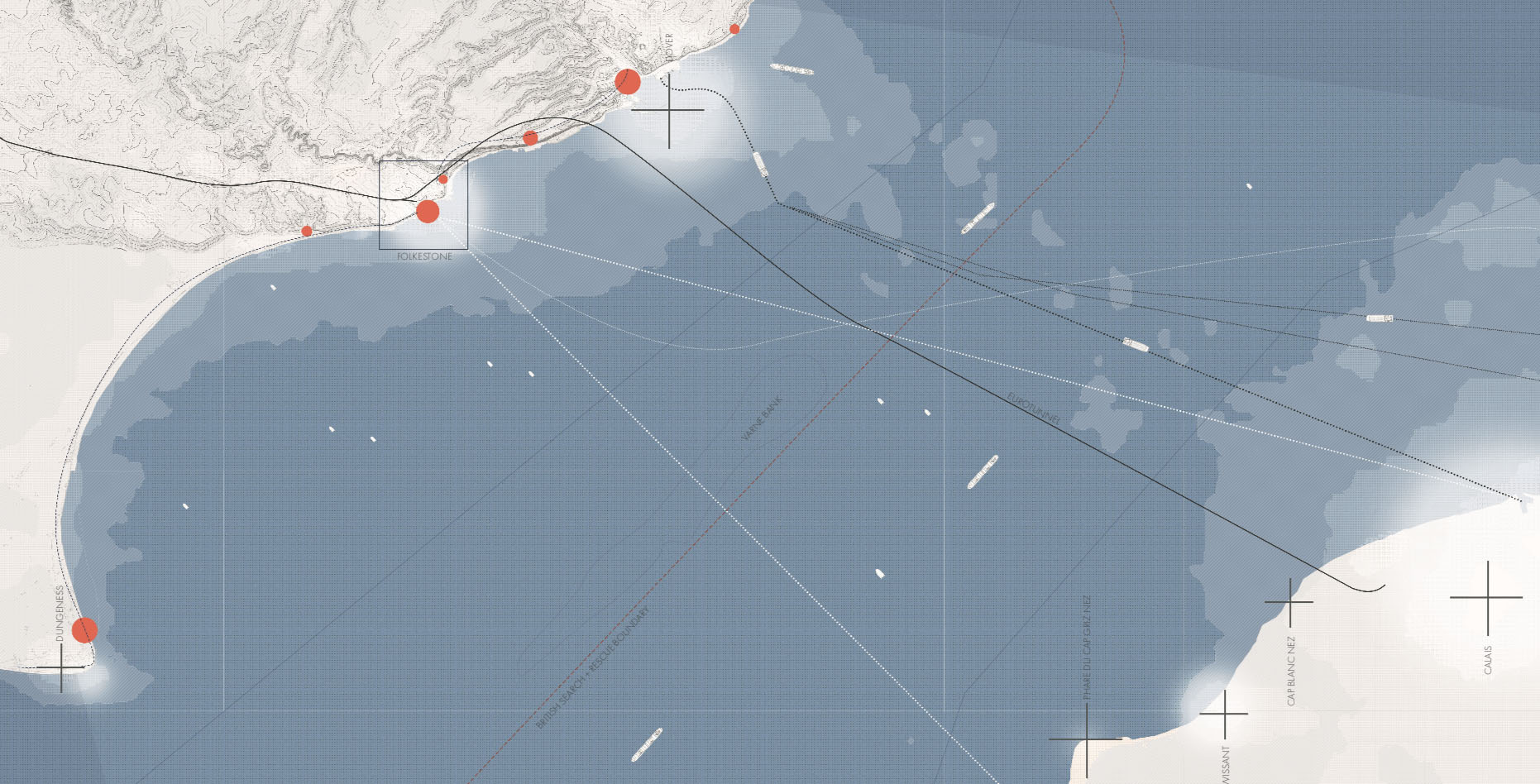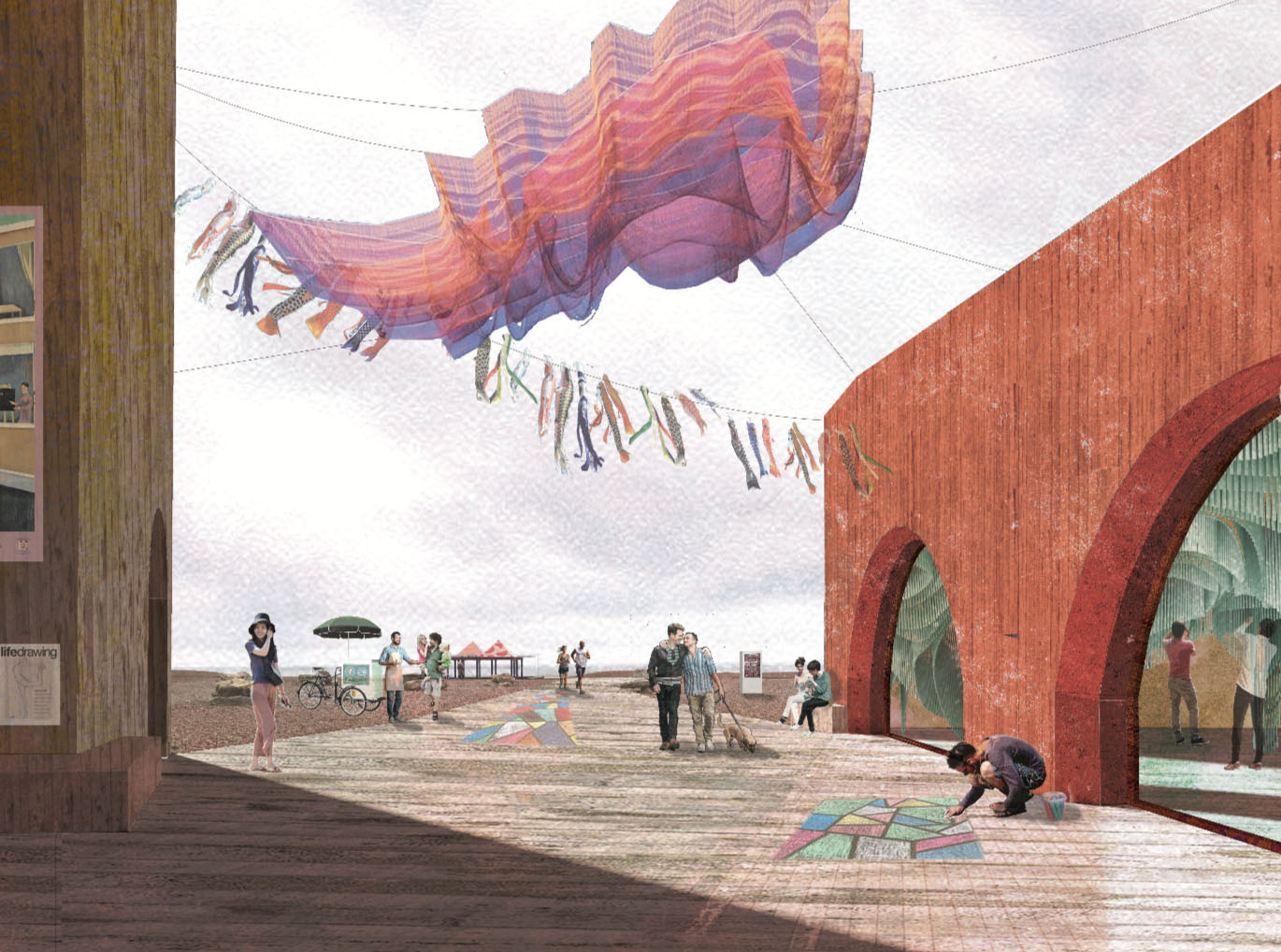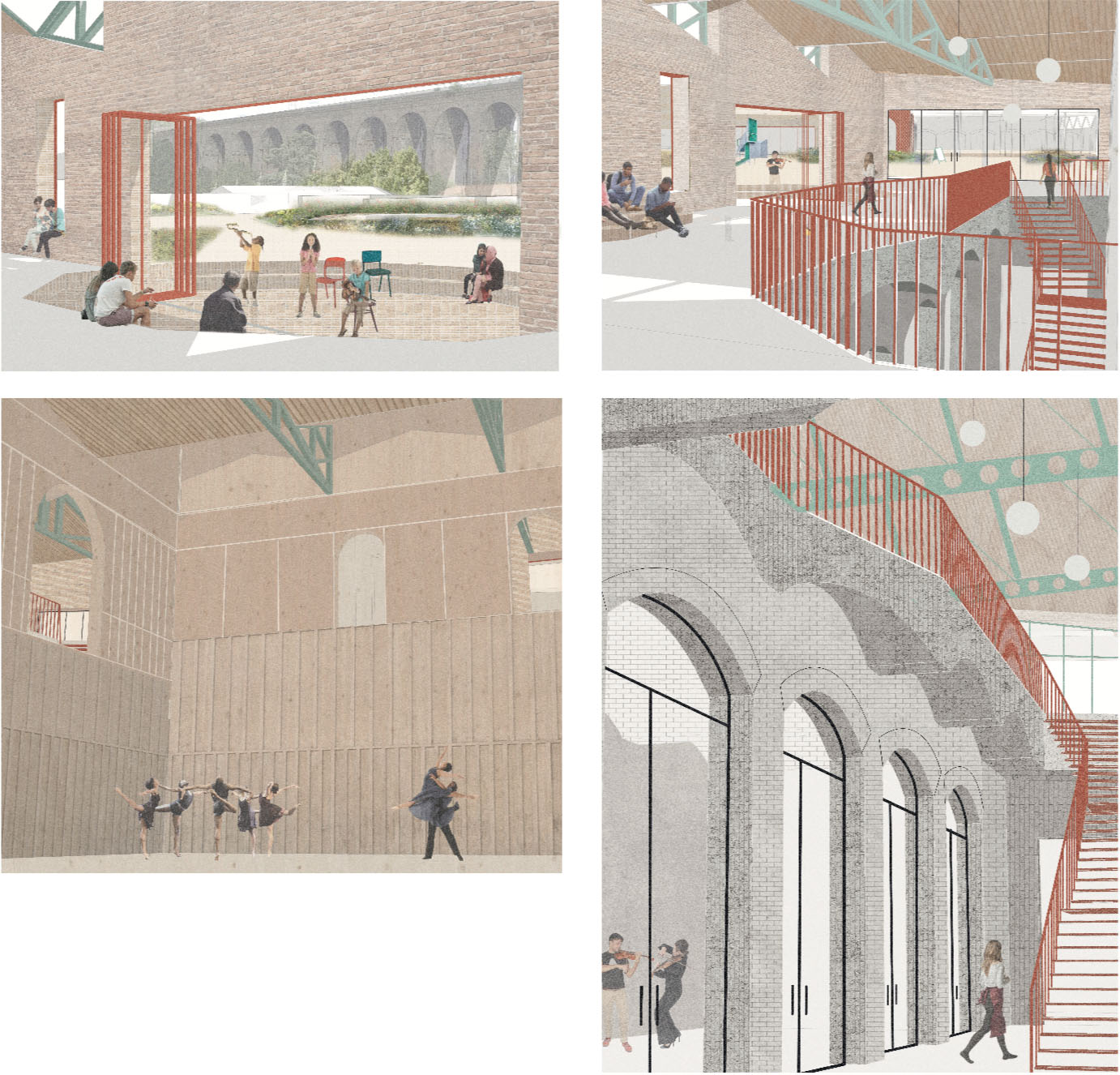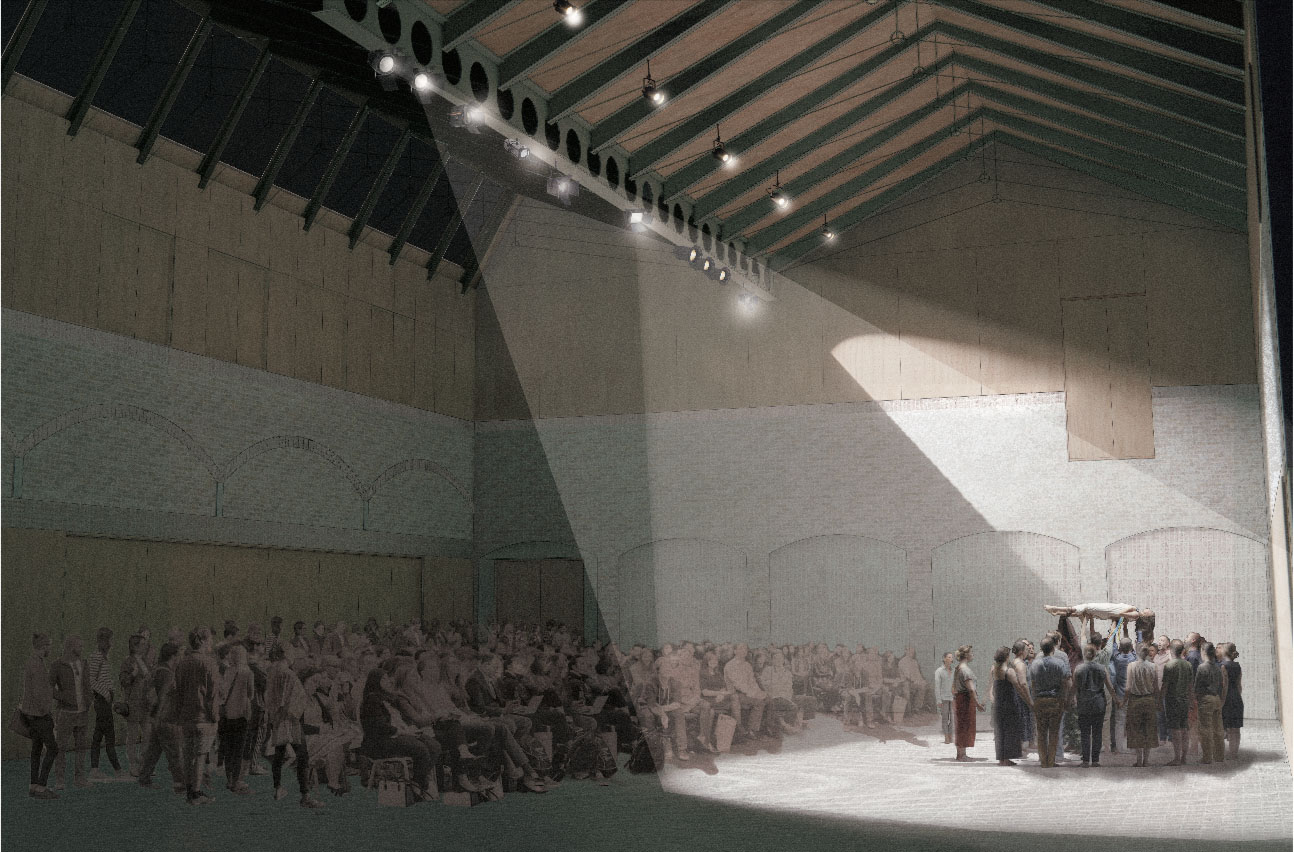The Playhouse

Yuriko was a student of the Nissen Richards teaching unit at London Metropolitan University, where the brief was to re-think Cedric Price's Fun Palace for today.
Throughout its history, Folkestone has harnessed its prominent position on the South Coast for various industries, the last of which left in 2000 with the closing of the Ferry Terminal. As these industrial carcasses have slowly been demolished or fenced off, Folkestone’s history has become severed from its communities, contributing to their fracture and isolation.

Today, Folkestone’s fabric is an emporium of artefacts which tells its rich history, amongst which an ephemeral layer of arts, performance, weather, and people permeate. The idea of change, appropriation and celebration are at the centre of Folkestone’s eclectic past and future.

The term Folkestone is an Art School was coined during 2017 triennial, it refers to the workshops held around the town, which focused on how the public realm can be explored through artistic practices. My research is summarised by a play on this phrase; ‘Folkestone is a museum’, investigating how Folkestone’s relics and artefacts, existing and demolished, can be used to explore community identity, cohesion, and inclusivity, in its transitional climate.

The Playhouse reinstates the site of the old Gasworks as the powerhouse of Folkestone’s post-industrial cultural transformation, in the wake of the Triennial + Urban Art Projects. This site feeds into a vibrant pathway along which activity from the Gasworks can catalyse emerging creative networks in Folkestone, while maintaining the spirit of key industrial sites. This allows existing and future communities to drive these changes and reform collective identity through the re-imagination of the late landmarks.

Cedric Price rejects the idea of architectural identity because it denies the user the freedom to impose their own status, however I believe the incorporation of historical reference allows existing residents to relate to the site and allows new residents to understand and connect to its history. The reimagination and repurpose of historical relics throws the site into a state of flux, encouraging artistic interpretation and appropriation, and therefore rejecting the idea of a rigid society, stubborn to change.

Cultural development + consumption of the arts has always been at the centre of changing societal values. The arts and society are in continuous conversation – art reflects and innovates new modes of thought. In Folkestone the urban artworks, inspired by relics and themes of the past, visually reflect the transformation of the society from industrial and closed, to open, creative and leisure focused.

The traditional notion of the museum is a place to reflect on and learn from the static past. These institutions have recently received criticism for opacity in their operation and curation, and support of colonialist activities. During Covid-19 we further recognised the importance of social engagement, community strength, and our interaction with the built environment. Museums should reflect society, and therefore enter into a dialect with the people they serve, as opposed to being a mausoleum which upholds past values.

